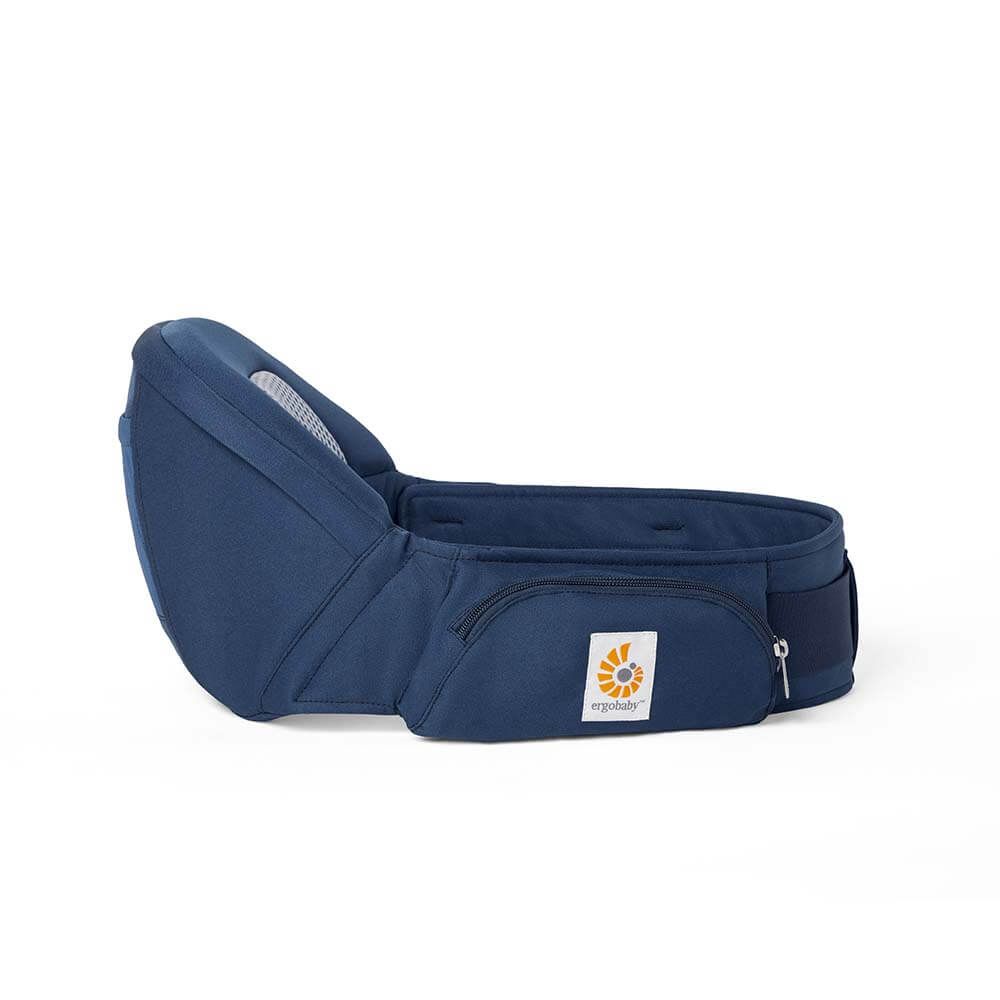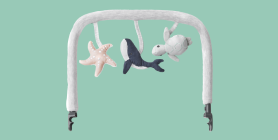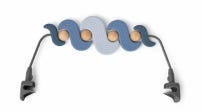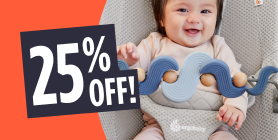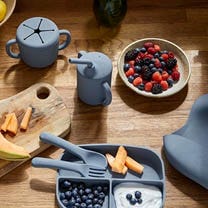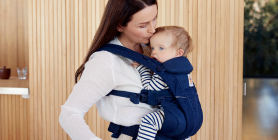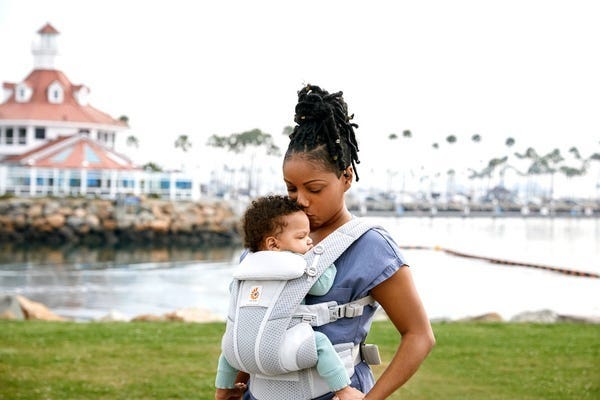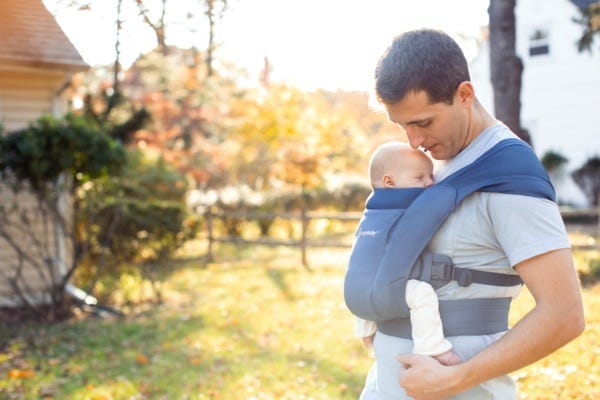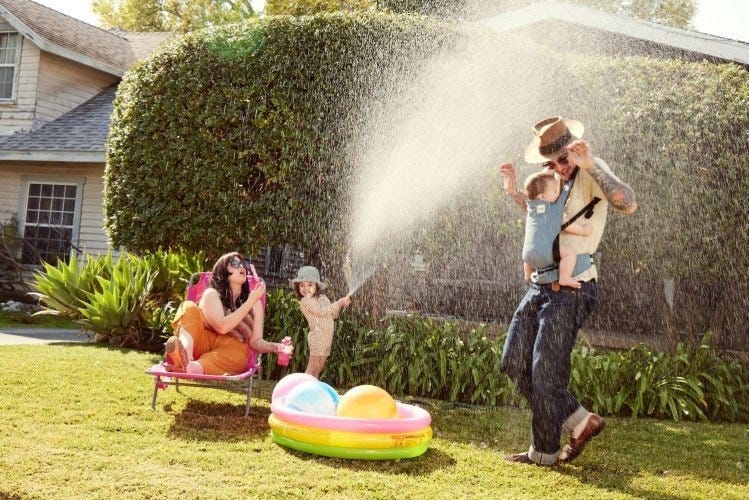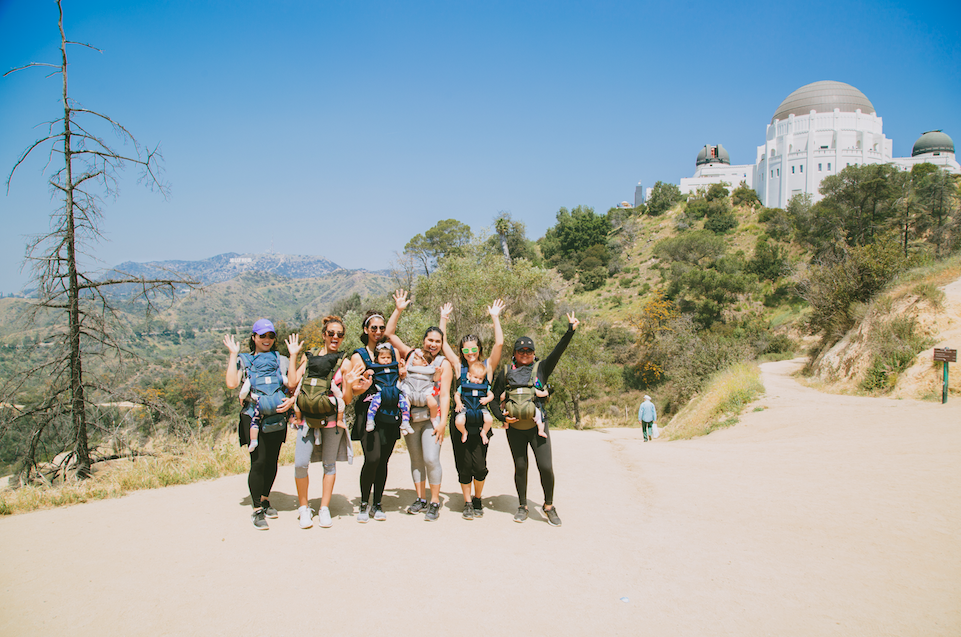
My husband and I enjoy hiking and were determined to keep hiking a part of our life even after we had children. We therefore found ways to make hiking both possible AND fun with an infant or young toddler. So in the spirit of fun times ahead, here are a few tips for hiking with your baby.
1. Only hike in good weather
This may go without saying, but many adults have no problem hiking in the rain or the cold. Babies, on the other hand, are not as able to regulate their body temperature like adults can and since they are not generating heat through activity, they can lose body heat quickly through their hands and feet. What’s more, babies and young children do not follow instructions even when it’s to their benefit to do so! No matter what you do, sometimes your child will insist on hanging a foot, hand, or even head outside of the rain cover or poncho to get cold and wet. The end result? Unhappy baby, unhappy parents. Always check the weather forecast before leaving and bring inclement weather gear (including a weather cover for your carrier) even if the forecast is clear.
2. Check baby frequently
Take frequent breaks to stop and check on your baby. Check arms and legs to make sure s/he is warm enough but not overheating. Check the diaper to make sure it’s dry and clean. Check to make sure the baby is not hungry. Also, plan to stop every so often just to give your baby a break from the carrier. Let baby lay (or sit or crawl or stand) along the trail and explore. Babies usually enjoy gazing at trees, clouds, and other sights along the way.
3. Plan ahead for diaper changes
If you’re going to be hiking along a place that may not always be conducive to diaper changing, change diapers whenever the opportunity strikes. Take a long a thick pad or blanket for a changing pad, and enough diapers/wipes to last the trip. Also consider bringing a wet bag to put dirty things in until you are able to dispose of them. Many hiking trails do not have regularly placed trash cans and you may need to pack your dipes and wipes out (yes, even if they are bio-degradable). Don’t forget an extra set of clothing in the event of aa blowout. You know they’ll happen if you are not prepared!
4. Make getting in the baby carrier fun!
Even the most chill baby can get fussy when asked to ride in a carrier for a long time. When we took Jack on a week-long backpacking trip in the Sierras with my parents, he started to get fussy when I made to put him back on my back. Our solution: all four of us stood around and cheered when I put Jack in the carrier. We whooped and hollered until he started laughing and grinning. We did this every time I loaded him up, and it made the whole trip a lot more fun for all of us.
5. Plan extra time for your hike
Doing anything with kids takes twice as long, and this is certainly true for hiking! The extra weight of carrying your baby will slow you down some, and you will need to take more frequent and longer breaks to attend to baby’s needs and give him/her a break from the carrier. If you go into the hike planning for this extra time, you will have a much better time. Try to be less goal-oriented and more experience oriented than you may be when hiking with adults.
6. Bring the right supplies
- Basic hiking supplies, including emergency shelter, food, water, and first aid kit
- Enough diapers to last the entire hike
- A wetbag or plastic Ziploc for wet clothes and/or dirty dipes
- Anti-bacterial hand wash
- A blanket to serve as a changing pad as well as an extra warmth layer if baby seems cold
- Change of clothes for the baby in case of diaper messes
- Warm clothing, including a hat, socks, mittens, if there is any chance of the weather turning chilly or rainy
- Sun hat & baby sunscreen. We love BabyLegs for covering up arms and legs from the sun and especially for that gap between the bottom of the pant leg and the top of the sock that always happens when we put our babies in carrier!
- Snacks for baby. If your child is eating solids, snacks are a great way to keep a fussy baby entertained while on the go
- A few toys that can be attached to your carrier with a toy clip
- A babywearing mirror for checking out your baby while on the go. Babies also love mirrors as toys.
- A great baby carrier, obviously! (See next tip)
- A weather cover to keep baby warm and dry
7. Bring a baby carrier that is comfortable for both you and the baby
Assuming your baby has good head control, I generally recommend carrying baby on your back for hiking. This is both more comfortable for the wearer (our bodies are built to carry heavy loads on our backs) and safer in that you can watch your step and maneuver more easily. The Ergobaby Carrier is one of my favorite carriers for day hiking. The Ergobaby is comfortable for almost everyone and the padded waist is great for putting baby’s weight on your hips instead of your shoulders. The Ergobaby can be worn on the back or on the front if you prefer. Consider the Cool Air Mesh line if you get sweaty easily – they are much cooler than the original version!
Please use caution when attempting any of the carries, exercise or activities highlighted on this blog, social media or any other content channels. Please use common sense and caution when using a baby carrier. You should consult a physician before starting any diet or exercise program. For more information, see our Disclaimer.
Emotional Benefits of Getting Outside
Spending time in nature with your baby can strengthen the bond between you. The simple act of holding your baby close, feeling their warmth, and sharing new experiences together can create strong emotional connections. It’s also a wonderful way to reduce stress and improve your mood. When my littles were extra fussy, I’d take a walk around the neighborhood. Even though I don't live in an area with trails and surrounded by nature, simply behind outside changed everything. A little vitamin D does wonders!
Cognitive Development
Nature is a sensory wonderland for babies. The different sights, sounds, and smells can stimulate your baby’s senses and promote cognitive development. Watching leaves rustle, hearing birds chirp, and feeling the texture of a tree bark can all contribute to their learning and development.
All About Baby Carriers for Nature Adventures
Choosing the Right Baby Carrier
When it comes to selecting the best baby carrier for summer adventures, there are several options to consider.
Types of Baby Carriers:
- Wraps: Perfect for newborns, providing a snug and secure fit.
- Slings: Ideal for quick and easy use, offering good ventilation.
- Soft Structured Carriers: Versatile and comfortable for both parent and baby, suitable for longer trips.
Factors to Consider:
- Baby’s Age and Weight: Ensure the carrier is appropriate for your baby’s size and weight. For example, Ergobaby’s Embrace Newborn Carrier is perfect for the fourth trimester where baby is small and you’re looking for an easy way to stay close. As they grow, you’ll want to upgrade to an all-position carrier that’s meant for growing babies.
- Parent’s Comfort and Ergonomics: Look for carriers with padded shoulder straps and lumbar support if you’re planning on longer outings.
- Ease of Use: Choose a carrier that is easy to put on and take off.
- Climate and Breathability: Opt for carriers made of breathable fabrics to keep you and your baby cool in hot weather.
Safety Tips:
- Proper Positioning: Ensure your baby is seated correctly, with their legs in an "M" position and their head should be close enough to kiss.
- Checking for Wear and Tear: Regularly inspect your carrier for any signs of damage.
- Ensuring Adequate Support: Make sure the carrier provides proper support for your baby’s head and neck.
Exploring Nature with a Baby Carrier
Ideal Spots for a Nature Walk with Baby
- Parks and Gardens: Great for leisurely walks and picnics.
- Nature Trails and Forests: Perfect for more adventurous outings.
- Beaches and Lakesides: Wonderful for enjoying the water and sand, with the right carrier.
Activity Ideas
- Hiking: Enjoy a scenic hike with a hiking baby carrier that offers support and storage.
- Bird Watching: Use your carrier to keep your baby close while you explore and observe wildlife.
- Picnics: A carrier can free up your hands, making it easier to carry picnic supplies.
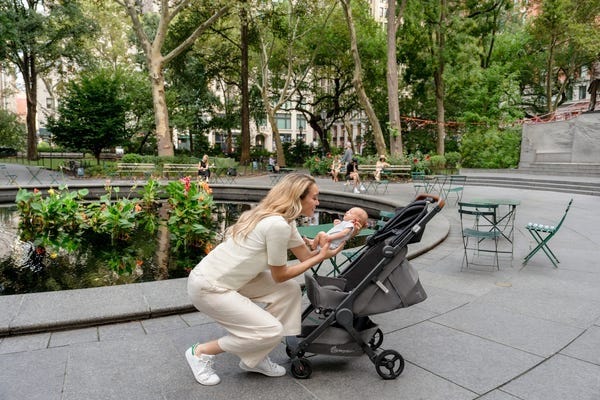

Advantages of Using Strollers for Nature Adventures
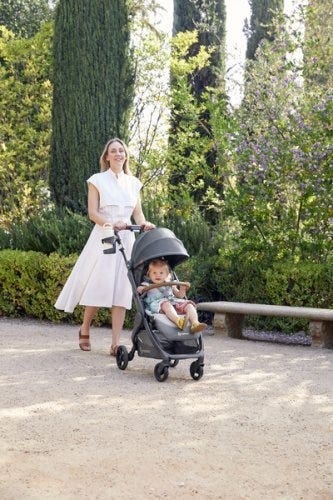

While baby carriers are fantastic for mobility and closeness, depending on the adventure of choice you might want to be a stroller along too.
There are a LOT of baby stroller options on the market. So we understand how confusing it can be to choose the one that’s right for your family. Not only are there a variety of brands, but a variety of strollers that serve different purposes.
There are a few types of strollers on the market:
- Full-sized stroller: This is typically the stroller parents thing of buying for all its versatility.
- Lightweight or umbrella stroller:These compact strollers are perfect for on-the-go adventures.
- Jogging stroller: Designed for parents who want to combine fitness with outdoor adventures.
- Double stroller: Designed for parents with multiple kids, especially twins.
- Car seat carrier: These strollers connect to a specific car seat. We don't typically recommend these as they can be unsafe for baby and uncomfortable for parents who are pushing.
Learn more about the types of strollers and which one would be best for you.
Benefits of Bringing a Stroller
- Storage Space for Gear: Ample room for carrying all your essentials like a diaper bag, beach toys and more.
- Shade and Weather Protection: Built-in canopies to shield your baby from the sun when they are lounging.
- Options: If you have more than one kid, you can stroll with one and carry the other. Or, if you’re getting warm or your little one is getting fussy, you can switch up their position from stroller to carrier or vice versa.
Safety Tips for Strollers
- Ensure your stroller is in good working condition. Make sure buckles are still buckling and that there are no rips or holes that could compromise your baby’s safety.
- Use sunshades or bug nets to protect your little one’s skin.
- Securing the baby properly: always buckle up your baby for safety even if you think they are old enough to go without the buckle.
Combining Baby Carriers and Strollers
For the ultimate flexibility, consider using both a baby carrier and a stroller on your outings.
Combining both options allows you to adapt to different situations. Use the carrier for more rugged trails and switch to the stroller for smoother paths or when your baby needs a nap.
Transition Tips
- Smooth Transitions: Plan stops where you can easily switch from carrier to stroller.
- Pack Light: Only bring essentials to make transitions easier.
Tips for a Successful Adventure
Planning Ahead
- Route Planning: Choose baby-friendly trails and parks. Check local mom groups or outdoor groups and get recommendations for the best outings for kids.
- Check Weather Conditions: Avoid extreme heat or unpredictable weather. Even with our most breathable carriers, when it’s hot, it’s hot. And having two bodies against each other in the heat will be naturally hot and sticky already.
- Packing Checklist: Include diapers, snacks, water, sunscreen, and a first-aid kit. These all-position carriers have storage pockets where you can fit some of the items easily!
- Stay Hydrated and Nourished: Pack healthy snacks to keep energy levels up and bring plenty of water for both you and baby.
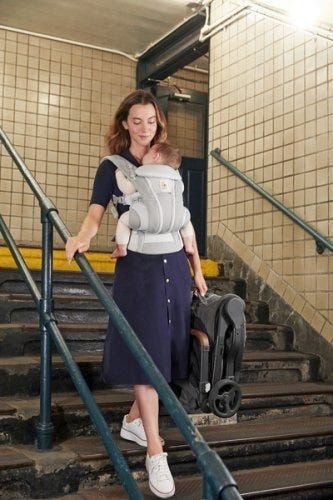

Summer adventures with your baby are a wonderful way to create lasting memories and enjoy the beauty of nature together. From baby carriers to strollers, Ergobaby products are designed to provide comfort and ease for both you and your little one. So, gear up, get outside, and explore the world with your baby by your side.
Ready to embark on your own summer adventures? Check out Ergobaby’s range of baby carriers and strollers to find the perfect match for your family’s needs. Visit our website today and start planning your next outdoor excursion!





